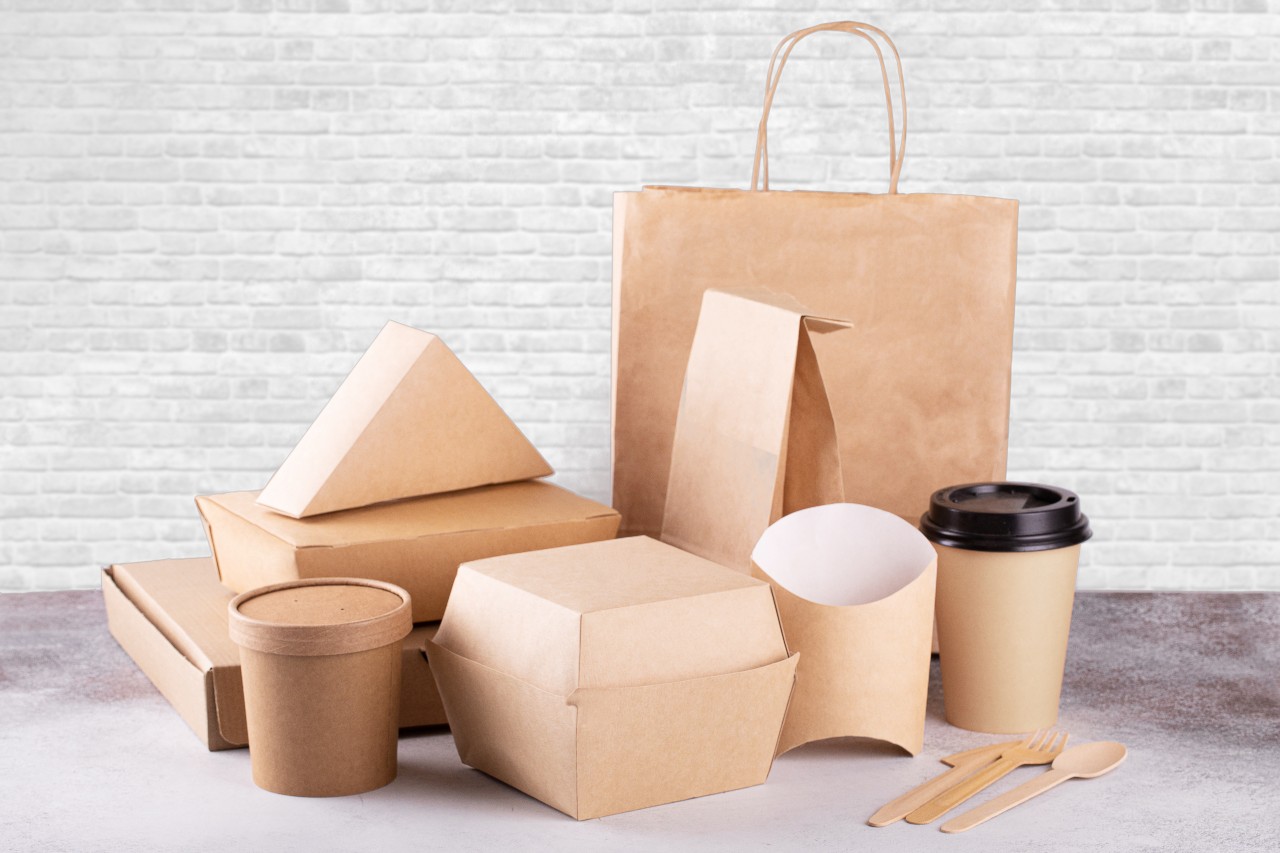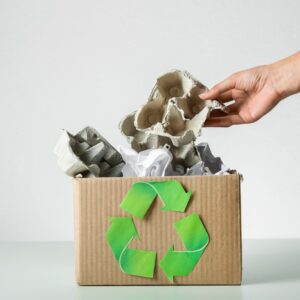Magnus Renman, R&D director at DS Smith, discusses the potential of carton packaging and other fibre-based materials as sustainable solutions.

In the on-going reduction of single-use plastics, there has been a shift towards fibre-based alternatives, such as carbon. (Credit: UvGroup/Shutterstock.com)
As a spectator, one is granted the benefit of a wider field of vision, which in the case of carton means that an outsider might see a number of trends that are connected through their use of carton board or corrugated board. Whether that might be the use of corrugated or carton in supplying the rising demand in e-commerce packaging or the place of paper and board in the circular economy through to the overall impact of coronavirus on the sector, it is apparent that corrugated board is a key figure in a number of different fields. It takes an expert to explain the significance of what is being seen; Matthew Rogerson speaks to Magnus Renman, who, in his role as R&D director at DS Smith – a leading provider of sustainable packaging solutions worldwide, operating across 34 countries and employing around 30,000 people – is well placed to provide such insight.
What opportunities are there for fibre and alternative materials in the circular economy?
Magnus Renman: “Through the ongoing reduction of single-use plastics, there is a developing theme in the EU of the opportunity for fibre and alternative materials to show what they can do. With the ban on drinking straws and cutlery, and other single-use catering plastic products taking place recently, and the move towards reduction of plastic shopping bags, this is an opportunity for fibre-based alternatives to be considered as sustainable solutions.
“In the wider theme of moving towards the circular economy, the EU has stated its intention that, by 2030, 100% of packaging put into the market must be (widely) reusable or recyclable. Paper-based packaging, having recycling rates in excess of 80% in Europe, will be a strong alternative for replacing some of the plastics we are using today.
“With a closed-loop packaging recycling model, and as Europe’s largest cardboard and paper recycler, environmental and sustainable solutions are incredibly important to DS Smith, meaning they are perfectly positioned to contribute and bring value in this area.”
What has been the impact of coronavirus on areas like e-commerce packaging?
MR: “There has been an upturn in online shopping recently in Sweden as well as in many countries across Europe. You would have seen that, even in Sweden, the malls were quite empty during the worst period in April and May. Now, people are coming back again into shops and stores.
“But it’s still not at the same level as pre-Covid-19. Definitely the UK, being the third-biggest e-commerce market in the world, has seen a huge lift in figures with 89% of UK consumers saying that they will continue to shop online at the same level or more post-lockdown, according a recent survey we carried out.
“There are similar trends across Europe as a whole, with 64% of Europeans saying they shopped more online during Covid-19, and 89% saying they will continue to shop as much online or even more post-lockdown.”
How important is fibre as a sustainable solution?
MR: “As you know, we are a big collector of paper for recycling, as Europe’s largest cardboard and paper recyclers. In Europe, it is also worth noting that 75% or 36.5 million tonnes of paper entering the packaging loop are made from recycled fibres, so there is a big use of recycled fibres when it comes to corrugated packaging.
Depending on collection infrastructures, there is a varying quality and a mix of fibres that needs to be sorted pre or post-collection, and turned into recycled papers for packaging. One thing for sure is that when paper is collected separately from other materials for recycling, such as plastic, it provides for the best-quality recycling.
Of the different fibres that are coming in there are attempts to use not just the wooden fibres but other fibres from other sources – but the strength to cost ratio will limit their usage. One recent development is our work with Aquapack Polymers, which is a Polyvinyl Alcohol that is easy to recycle.
It can go through our systems and will be picked up in our normal waste systems, and is biodegradable as well. That will be one way for us to replace harder to recycle plastic with something that has similar barrier properties, but is much better from a recyclability, pulpability and circular economy point of view.
As an R&D team, we are fortunate that there are a lot of innovators in the space of replacing plastic components, but the challenge is to carefully select the right materials that maximises the packaging solution in both performance and circularity – both are important for our customers.”
Performance and safety are of paramount importance – can you provide a little more detail on how and why?
MR: “Food contact regulation in the EU is a major area that we follow closely. We have done extensive work in DS Smith over the past ten years, with the different paper products we are producing and we use industry-leading institutes for third-party testing – we do this to make sure that all of our products are safe for the consumer and everyone that deals with our packaging.
“We have a product safety network within our company that meets regularly to review what can we do better, and ensure that our processes are developed in a way that the design and manufacture of paper packaging is fit for purpose.
“Key for us is producing packaging that is both sustainable and capable of providing the performance that our customers and consumers demand. We also see collaboration as key; collaborating with customers, logistics, brand owners, retailers, consumers, policymakers and industry bodies ensures that packaging solutions are fit for the needs of all stakeholders.
“Whether it’s through our recycling collections for our customers or through deliveries by other collectors straight to our paper mills – we recycle papers from retailers, printers, offices, municipalities and a wide range of industry sectors.
“We use those fibres as part of our rigorous recycling and paper-making processes, the output of which is then tested for its purity using industry-leading testing labs to ensure that our finished packaging papers are food safe.
“There are packaging solutions that are heavily laminated, especially in carton board applications, and they typically need to be recycled in a special mill. We are working hard to develop alternatives that can replace hard-to-recycle plastics – allowing for more packaging products to be recycled easily in traditional large-scale standard recycling mills.”
On the topic of recycling, what are some of the latest developments?
MR: “Part of the work in making sure that more packaging gets recycled is to identify the right methods of recycling collections. We know, from all the different collection methods we receive material from, that source segregated paper and card provides the best-quality material for recycling.

“We are participating in a cross-industry initiative called 4Evergreen, which is focused on proposing ways to increase the recyclability of paper fibres across Europe, where a segregated collection system is one part of improved recyclability and consequently a better circular economy solution.
“A typical mill will take on recycled papers from a variety of sources, a large portion of which might be empty corrugated retail packaging, for example. Within that you will encounter laminated materials that are not paper fibres.
“This is quite normal for corrugated board and we can handle a certain amount of non-paper fibres in our standard mill process if it is not too heavy lamination. From a material point of view, it’s very manageable in low percentages in our processes.
“Of course, ideally, we would want zero contamination in our recycling streams, but we realise that we do not work in a perfect world, so our processes have to be robust enough to deal with different scenarios – without compromising the quality or performance of our finished paper products.”
What are some of the latest or key trends you are seeing in carton and fibre currently?
MR: “Research and development typically works with future applications and technologies, and is about delivering not only for the next but also for the now. At DS Smith, we are focused on helping to solve some of society’s biggest packaging challenges, like coffee cups, with sustainable solutions, while also keeping one eye firmly on the future.
“We have 700 designers who can create bespoke designs for our customers every day, but we need to look at what is the next big thing we can provide to our customers.So, we spend a fair bit of time trying to understand what we’re seeing from the market, customers as well as our partners, and turning it into our R&D programmes to meet the ever-changing demands of consumers and, consequently, our customers.
“Right now, it’s fair to say that a lot of focus is on replacing hard-to-recycle material and single-use plastics, ensuring that replacement opportunities are both more sustainable and fit for purposes. But it’s not just about replacement or substitution, it has to be about using less resources as well as be supporting a circular economy.
“How can we develop performance packaging solutions that use less materials and have less pull on our planet’s resources? They are the type of questions we are attempting to answer every day, while keeping up with changing consumers demands and lifestyles.
“Within this framework, there is a balance between how far out we can look for these signals and react to potential future trends to have solutions ready, should they become current market needs.”
Any final thoughts?
MR: “You try to look out as far as you can, but at the same time you need to consider the here and now as well. Is the priority to apply something new for tomorrow or is there a demand that needs meeting right now. Both equally as important, so you need to get the balance right.
“You have to spend the right time in the two areas continuously, setting out in a direction based on the insights gathered, but challenging that you are going the right way every day. Are we solving the right problems?
“What about that information we heard yesterday, how does that fit into the bigger picture? Do we need to change something right now, or do we need to develop a longer-term approach?
“All these questions were big considerations when building our new ‘Now and Next’ sustainability solutions. A key part of that is closing the loop through better design. For now, by 2023, we will manufacture 100% recyclable or reusable packaging, but with an eye on the future. By 2030, we are aiming for all our packaging to be recycled or reused. The two work in tangent together.”
Magnus Renman lives in Sweden, which did not implement a countrywide lockdown like the majority of EU countries in 2020.
This article first appeared in Converting Today
